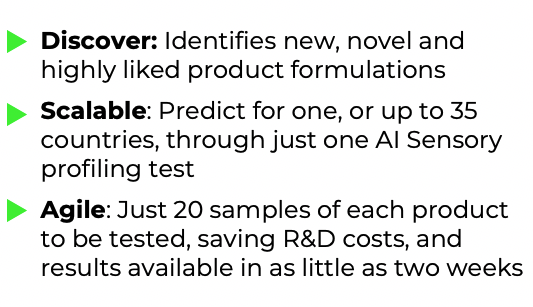

Particular, compressed tables use less disk space and so In practice, the advancedĭoes each table use an appropriate row format? This choiceĪlso depends on the storage engine used for the table. Optimizing CPU and memory usage canĪlso improve scalability, allowing the database to handle more loadįor new tables.
Mysql optimizer cost model code#
While other times you might troubleshoot a configuration or code Sometimes you can be proactive and plan in advance for performance, Single database server, or multiple networked database servers.


The level of individual SQL statements, entire applications, a (developer, DBA, or a combination of both), you might optimize at Optimization involves configuring, tuning, and measuring
Mysql optimizer cost model how to#
This chapter explains how to optimize MySQL performance and providesĮxamples.

Table of Contents 8.1 Optimization Overview 8.2 Optimizing SQL Statements 8.2.1 Optimizing SELECT Statements 8.2.2 Optimizing Subqueries, Derived Tables, View References, and Common TableĮxpressions 8.2.3 Optimizing INFORMATION_SCHEMA Queries 8.2.4 Optimizing Performance Schema Queries 8.2.5 Optimizing Data Change Statements 8.2.6 Optimizing Database Privileges 8.2.7 Other Optimization Tips 8.3 Optimization and Indexes 8.3.1 How MySQL Uses Indexes 8.3.2 Primary Key Optimization 8.3.3 SPATIAL Index Optimization 8.3.4 Foreign Key Optimization 8.3.5 Column Indexes 8.3.6 Multiple-Column Indexes 8.3.7 Verifying Index Usage 8.3.8 InnoDB and MyISAM Index Statistics Collection 8.3.9 Comparison of B-Tree and Hash Indexes 8.3.10 Use of Index Extensions 8.3.11 Optimizer Use of Generated Column Indexes 8.3.12 Invisible Indexes 8.3.13 Descending Indexes 8.3.14 Indexed Lookups from TIMESTAMP Columns 8.4 Optimizing Database Structure 8.4.1 Optimizing Data Size 8.4.2 Optimizing MySQL Data Types 8.4.3 Optimizing for Many Tables 8.4.4 Internal Temporary Table Use in MySQL 8.4.5 Limits on Number of Databases and Tables 8.4.6 Limits on Table Size 8.4.7 Limits on Table Column Count and Row Size 8.5 Optimizing for InnoDB Tables 8.5.1 Optimizing Storage Layout for InnoDB Tables 8.5.2 Optimizing InnoDB Transaction Management 8.5.3 Optimizing InnoDB Read-Only Transactions 8.5.4 Optimizing InnoDB Redo Logging 8.5.5 Bulk Data Loading for InnoDB Tables 8.5.6 Optimizing InnoDB Queries 8.5.7 Optimizing InnoDB DDL Operations 8.5.8 Optimizing InnoDB Disk I/O 8.5.9 Optimizing InnoDB Configuration Variables 8.5.10 Optimizing InnoDB for Systems with Many Tables 8.6 Optimizing for MyISAM Tables 8.6.1 Optimizing MyISAM Queries 8.6.2 Bulk Data Loading for MyISAM Tables 8.6.3 Optimizing REPAIR TABLE Statements 8.7 Optimizing for MEMORY Tables 8.8 Understanding the Query Execution Plan 8.8.1 Optimizing Queries with EXPLAIN 8.8.2 EXPLAIN Output Format 8.8.3 Extended EXPLAIN Output Format 8.8.4 Obtaining Execution Plan Information for a Named Connection 8.8.5 Estimating Query Performance 8.9 Controlling the Query Optimizer 8.9.1 Controlling Query Plan Evaluation 8.9.2 Switchable Optimizations 8.9.3 Optimizer Hints 8.9.4 Index Hints 8.9.5 The Optimizer Cost Model 8.9.6 Optimizer Statistics 8.10 Buffering and Caching 8.10.1 InnoDB Buffer Pool Optimization 8.10.2 The MyISAM Key Cache 8.10.3 Caching of Prepared Statements and Stored Programs 8.11 Optimizing Locking Operations 8.11.1 Internal Locking Methods 8.11.2 Table Locking Issues 8.11.3 Concurrent Inserts 8.11.4 Metadata Locking 8.11.5 External Locking 8.12 Optimizing the MySQL Server 8.12.1 Optimizing Disk I/O 8.12.2 Using Symbolic Links 8.12.3 Optimizing Memory Use 8.12.4 Optimizing Network Use 8.12.5 Resource Groups 8.13 Measuring Performance (Benchmarking) 8.13.1 Measuring the Speed of Expressions and Functions 8.13.2 Using Your Own Benchmarks 8.13.3 Measuring Performance with performance_schema 8.14 Examining Thread Information 8.14.1 Thread Command Values 8.14.2 General Thread States 8.14.3 Replication Master Thread States 8.14.4 Replication Slave I/O Thread States 8.14.5 Replication Slave SQL Thread States 8.14.6 Replication Slave Connection Thread States 8.14.7 NDB Cluster Thread States 8.14.8 Event Scheduler Thread States


 0 kommentar(er)
0 kommentar(er)
